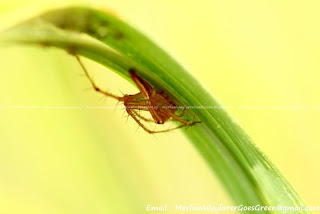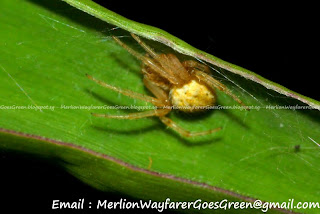Even in the heat of the day at close to 33-34 degrees Celsius, there are animals out there at mid-day...
Thinking it is just its Yellow Vented cousin, Merlion Wayfarer realized this was the songbird version of the Pycnonotus Jocosus Fuscicaudatus (Red-Whiskered Bulbul) when she walked nearer. Although it did not start singing, the orange tone near its tail was very striking in the bright sunlight...
The weird thing about the millipedes here is that they are good tree climbers! Here's one mid-way up a palm tree...
It was mating time at the Waterway! There were scores and scores of damsels and dragons flying around, some single, some mating -
- Argiocnemis Rubescens (Variable Sprite)
- Ischnura Senegalensis (Common Bluetail) Damselfly Male & Female
- Ictinogomphus Decoratus (Common Flangetail)




































